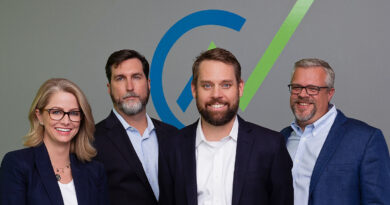Solution Evaluations: Begin With The End In Mind
Contrary to prevailing thought, I propose that marketing is the world’s oldest profession. After all, how can a sale be made if the availability of the product or service isn’t first made known? In the world of 2019 software technology, there seems to be no end to the marketing materials created which incorporates the latest buzzwords – AI, bots, machine learning, RPA, and the list goes on. The August 14, 2019 issue of the Wall Street Journal ran an article speaking to the murky nature of AI and artificial intelligence claims for a startup mobile app dev. platform, with the challenge by certain former company insiders that potential hype was used to attract prospective customers and venture capital funding. The point of debate from these insiders? That the level of true AI used in the product may be negligible to even non-existent.
The world of mortgage software technology is also caught up in this craze of ‘buzzword bingo’ which challenges each technology selection team with sifting through various claims to discern the real-world capabilities of each potential solution.
Specific to mortgage processing automation solutions, several enticing messages are currently touted, ranging from a shift in fundamental strategy (for example, OCR compared to ‘vision’-based alternatives) to claims of automatic income calculation and ‘straight-through processing.’ The operative phrase with all this messaging is caveat emptor. Of course, automatically calculating income is possible. That’s a function of writing a correct formula that’s inclusive of all possible applicant circumstances. While writing the formula is no small task, the more challenging task that occurs with every application is that of gleaning all of the correct data bits necessary to complete that formula, and this is where today’s processes bog down. The mountain of content an underwriter must sift through to find the appropriate document, for the right timeframe, for the right applicant, to then find the correct data elements to key into the income calculation formula is frustratingly slow, and later still prone to data entry error.
You appreciate this pain, because your team lives with it every day. But beware the siren song of a smooth sales presentation that speaks to these pains, when what you’re needing are verifiable results from your technology investment — results from your loan files, not pristine mock-ups optimized to show well in a demo. With an outcome-based mindset, the emphasis on buzzwords and hype is muted. If the solution can produce compelling results from the content it hasn’t seen before, only then does hearing how the new strategies and approaches produce results make sense.
The other day a prospect told me, “I’m from Missouri. I need to see this work with my files.” I commended him for his level of due diligence, perhaps based on knowing that demos can be made to show well, or maybe because he was left underwhelmed with the real-world results of a prior technology initiative. Either way, any credible solution developer should be happy to provide a blind test to demonstrate their real-world capabilities, and we encourage our prospects to press their solution candidates to perform such a test.
When conducting this test, provide sample loan files to your candidate organizations only when they arrive at your facility, not days or weeks before. This protects against allowing too much time for any organization to refine their results from your loan files, thereby negating the premise of a blind evaluation. To be fair to the candidate solution developers, it is also unrealistic for prospective clients to expect 100% automation across the entire loan file. While documents with a consistent structure like the 1003, 1040 tax return and related schedules should process correctly without further training, documents with more volatile layouts and verbiage, and documents internal to the originator that the solution may not have an awareness of would likely require additional system training before a production release. And of course, image quality always plays a role in processing accuracy. While much has been done to improve the enhancement capabilities of various imaging-processing solutions, an out of focus paystub picture taken with your phone will always pose challenges to accurate processing.
By limiting the time the candidate solution developer has access to your sample files, the true capabilities of each offering begin to surface. While the premise of automated calculations and straight-through processing are great, the crucial ingredient in both is accurate data. If the software doesn’t extract data from the image correctly and subsequently present any suspect data for manual review, the automation will produce incorrect results. In the scope of an ability to repay calculation, that error could be of considerable significance to the originator, so focus on the solution’s ability to provide as much purified data as possible before getting caught up in automated processing calculations. Purified data is the fuel that drives efficient process automation engines, while erroneous data produces bad decisions much faster than the manual alternative.
Certain mortgage automation providers are making claims about great results and fast processing times, but they seem to be short on details, leaving the prospect to dig for the truth. How robust is the document classification library? A library of 25 document types is likely to show a high automation rate, simply as a function the system offering a limited number of document choices. In the world of statistics, fewer options equate to less variability, and therefore, the chances are improved to make the right decision. Unfortunately, most mortgage organizations have business demands that drive the need for a more expansive library, thereby increasing the variability and driving down the automation rate on a poorly trained system. How robust is the solution’s out-of-the-box awareness of mortgage documents and the relevant data typically gleaned from those documents? Can this library enable an implementation timeline of less than three months, or as one prospective client unfortunately discovered, do over two years of system training work still yield less than 30% classification automation? On the topic of speed, how fast is “fast”? We’re hearing claims of an eight-hour turnaround from some providers, which might excite some organizations. Others, wanting to compete with the guys with the rocket, argue that hours might as well be days. The purpose of marketing is to generate demand for a product or service. If you’re in the market for a mortgage automation solution, press for all the essential details and look before you leap into what may turn out to be not quite what you expected.
Paradatec admittedly does not engage in heavy marketing, but we do claim a rich history in mortgage automation since 2007. We proudly call some of the largest household names in this market our clients, on both the origination and servicing sides of the business. In 2019, these clients will collectively process over one million mortgage files, spanning automated document classification, versioning, and data extraction tasks to support various loan boarding, audit, and compliance functions. With a trained library that knows over 750 document types in the typical mortgage file and contextual understanding to extract over 8,500 distinct data points, rest assured that a ready-for-primetime solution exists and is waiting for you. Our platform leverages machine learning for efficient configuration, AI, and natural language processing to understand the context and robot-like capabilities to automate data comparisons…all performed at less than one second per page. But don’t take our word for it, see for yourself with our Blind Test Challenge.

Mark Tinkham is Director of Business Alliances at Paradatec, Inc. Over the past 25-plus years, Tinkham has worked for technology companies that deliver innovative solutions to the financial services industry. For the past 10 years, his primary focus has been bringing efficiencies to the mortgage market through industry-leading Optical Character Recognition.



